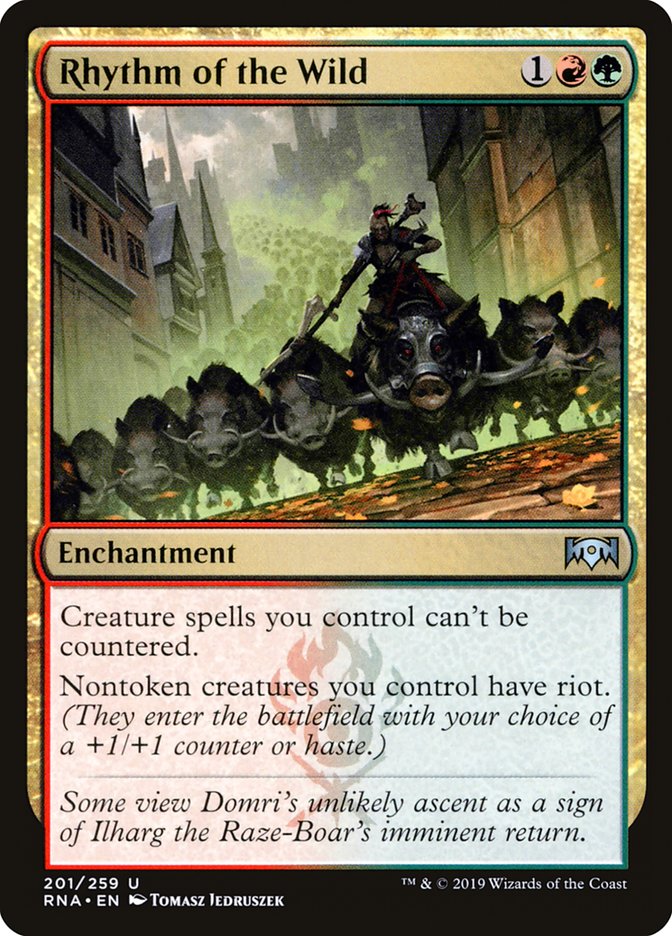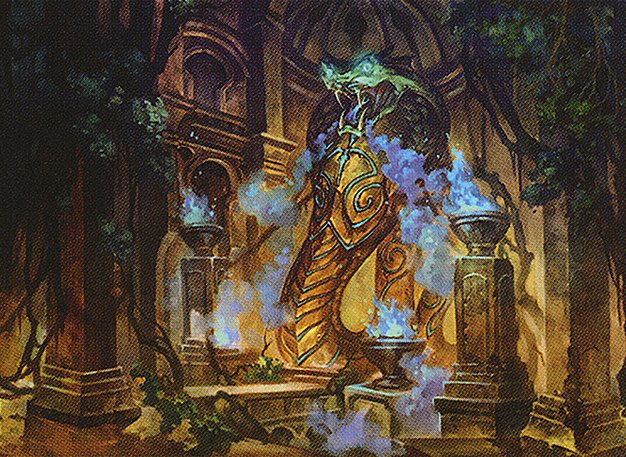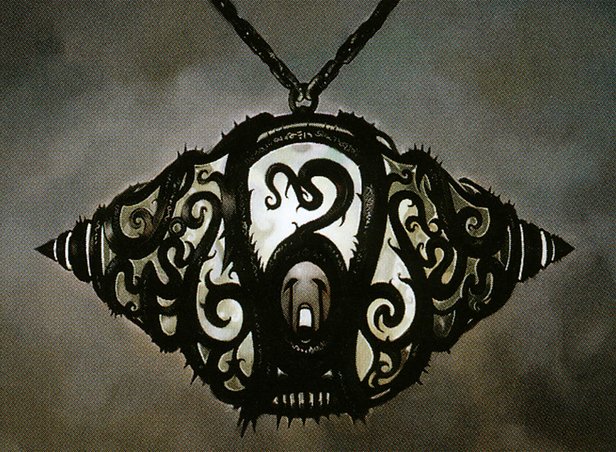Rhythm of the Wild MTG Card
| Card sets | Released in 5 setsSee all |
| Mana cost | |
| Converted mana cost | 3 |
| Rarity | Uncommon |
| Type | Enchantment |
Key Takeaways
- Prevents creatures from being countered, ensuring investments in your board are not wasted.
- Riot ability accelerates tempo, empowering creatures with haste or a +1/+1 counter.
- Demands specific mana colors, which may limit its usage to certain deck types.
Text of card
Creature spells you control can't be countered. Nontoken creatures you control have riot. (They enter the battlefield with your choice of a +1/+1 counter or haste.)
Some view Domri's unlikely ascent as a sign of Ilharg the Raze-Boar's imminent return.
Card Pros
Card Advantage: Rhythm of the Wild doesn’t directly draw you cards, but it interacts positively with the creatures you play, effectively increasing the value and impact each creature has on the game. By ensuring that creatures cannot be countered, you’re always guaranteed the creatures you invest in, which can be seen as a form of indirect card advantage—you get to keep what’s yours.
Resource Acceleration: Rhythm of the Wild facilitates a sort of ‘tempo acceleration’ by giving your creatures Riot. This means every creature that enters the battlefield under your control can either be a larger threat immediately or come into play ready to attack. This acceleration of your board state can pressure opponents and advance your game plan more rapidly.
Instant Speed: While Rhythm of the Wild is not an instant itself, its ongoing effect can be compared to having an invisible shield around your creatures, acting at instant speed to counter potential countermagic from opponents on every creature that hits the board. It also synergizes with creatures that have flash, allowing them to enter with Riot and capitalize on the element of surprise.
Card Cons
Discard Requirement: Rhythm of the Wild poses no discard requirement, thus this particular downside is not applicable to the analysis of this card.
Specific Mana Cost: With a specific mana requirement of one red and one green, Rhythm of the Wild demands a commitment to those colors, perhaps restricting its inclusion to primarily Gruul or multicolored decks with a base in those colors.
Comparatively High Mana Cost: Costing three mana to cast can be considered moderately high, especially in faster-paced metas where board presence or counterspells in the early turns can be more crucial. Dual-colored decks may also face challenges in assembling the specific mana types quickly enough to deploy Rhythm of the Wild effectively.
Reasons to Include in Your Collection
Versatility: Rhythm of the Wild offers flexibility to various deck archetypes, serving as a powerful tool for creature-based strategies. Its ability to grant your creatures riot ensures they always enter the battlefield with an immediate advantage, whether it’s additional power or the ability to act swiftly.
Combo Potential: This enchantment can be a linchpin in combos that revolve around creature abilities, particularly those that trigger upon entering the battlefield or attacking. It helps you to maximize value from each creature you cast, by allowing them to come into play with a +1/+1 counter or haste.
Meta-Relevance: In a meta where board presence and speed can determine the winner, Rhythm of the Wild ensures that your creatures bypass control elements like counter spells, keeping your tempo up. Its constant pressure and utility make it a persistent threat against a wide span of opposing decks.
How to beat
Overcoming Rhythm of the Wild in MTG is all about understanding its strengths and timing. This enchantment gives creatures you control the boon of not being countered, nurturing an environment where your formidable beasts can enter the battlefield with impunity. Its additional perk of conferring Riot to your creatures underscores its aggressive slant, granting them either haste or a +1/+1 counter, thereby amping up the tempo and the threat level significantly.
To turn the tide against Rhythm of the Wild, pinpoint removal of the enchantment itself is paramount. Employing disenchantment effects after it’s played but before it can substantially affect the board is crucial. Competitive alternatives like Naturalize or Disenchant at instant speed disrupt the rhythm your opponent wishes to establish.
Alternatively, sweepers like Supreme Verdict can reset the board, bypassing the “cannot be countered” clause with uncounterable removal. By integrating such strategies, you can dismantle your opponent’s plans, maintain control of the game pace, and remove the incremental advantages that Rhythm of the Wild provides to creatures. In doing so, you can effectively silence this wild symphony and steer your deck to victory.
BurnMana Recommendations
Mastering MTG is an ever-evolving challenge, and incorporating Rhythm of the Wild into your arsenal could be a game-changer. Its power to grant creatures riot, ensuring they’re uncounterable, equips you with a persistent edge in any match. This enchantment is an asset for players who aim to outpace their opponents, fortify their creatures, and thrive in a variety of metas. If you’re eager to explore strategies that leverage the synergies Rhythm of the Wild provides and wish to dominate the battlefield with creatures that make an instant impact, delve further into its potential. Discover more insights on this dynamic card and refine your deck-building skills with BurnMana.
Cards like Rhythm of the Wild
Rhythm of the Wild is a distinctive enchantment that has made a significant impact on the MTG deck-building landscape. It bears similarities to enchantments like Domri, Chaos Bringer, which also offer haste to your creatures and a possibility to manipulate creature spells. However, what sets Rhythm of the Wild apart is its immunity to countering, allowing creatures to hit the battlefield without interference and with added power thanks to the +1/+1 counter choice.
Comparatively, Fires of Yavimaya serves a similar function by granting haste but lacks the counter option that can permanently strengthen your creatures. Rhythm of the Wild also echoes the sentiment of Cindervines, delivering something extra for creature-focused decks—though Cindervines leans more towards control with its ability to deal damage for noncreature spells used by opponents.
Evaluating the nuances that each card brings to the table, Rhythm of the Wild stands out especially in decks that value speed and resilience. Its dual offering of haste and bolstering creatures with counters proves to be a potent combination that can escalate the threat level of any creature-based strategy in MTG.
Where to buy
If you're looking to purchase Rhythm of the Wild MTG card by a specific set like Ravnica Allegiance and Neon Dynasty Commander, there are several reliable options to consider. One of the primary sources is your local game store, where you can often find booster packs, individual cards, and preconstructed decks from current and some past sets. They often offer the added benefit of a community where you can trade with other players.
For a broader inventory, particularly of older sets, online marketplaces like TCGPlayer, Card Kingdom and Card Market offer extensive selections and allow you to search for cards from specific sets. Larger e-commerce platforms like eBay and Amazon also have listings from various sellers, which can be a good place to look for sealed product and rare finds.
Additionally, Magic’s official site often has a store locator and retailer lists for finding Wizards of the Coast licensed products. Remember to check for authenticity and the condition of the cards when purchasing, especially from individual sellers on larger marketplaces.
Below is a list of some store websites where you can buy the Rhythm of the Wild and other MTG cards:
- eBay
- TCG Player
- Card Kingdom
- Card Market
- Star City Games
- CoolStuffInc
- MTG Mint Card
- Hareruya
- Troll and Toad
- ABU Games
- Card Hoarder Magic Online
- MTGO Traders Magic Online
See MTG Products
Printings
The Rhythm of the Wild Magic the Gathering card was released in 4 different sets between 2019-01-25 and 2024-01-12. Illustrated by 2 different artists.
| # | Released | Name | Code | Symbol | Number | Frame | Layout | Border | Artist |
|---|---|---|---|---|---|---|---|---|---|
| 1 | 2019-01-25 | Ravnica Allegiance | RNA | 201 | 2015 | Normal | Black | Tomasz Jedruszek | |
| 2 | 2022-02-18 | Neon Dynasty Commander | NEC | 142 | 2015 | Normal | Black | Tomasz Jedruszek | |
| 3 | 2023-11-17 | The Lost Caverns of Ixalan Commander | LCC | 287 | 2015 | Normal | Black | Maxime Minard | |
| 4 | 2024-01-12 | Ravnica Remastered | RVR | 217 | 2015 | Normal | Black | Maxime Minard | |
| 5 | 2024-01-12 | Ravnica Remastered | RVR | 380 | 1997 | Normal | Black | Maxime Minard |
Legalities
Magic the Gathering formats where Rhythm of the Wild has restrictions
| Format | Legality |
|---|---|
| Historicbrawl | Legal |
| Commander | Legal |
| Historic | Legal |
| Legacy | Legal |
| Modern | Legal |
| Oathbreaker | Legal |
| Vintage | Legal |
| Duel | Legal |
| Explorer | Legal |
| Gladiator | Legal |
| Pioneer | Legal |
| Timeless | Legal |
Rules and information
The reference guide for Magic: The Gathering Rhythm of the Wild card rulings provides official rulings, any errata issued, as well as a record of all the functional modifications that have occurred.
| Date | Text |
|---|---|
| 2019-01-25 | A noncreature card that happens to be entering the battlefield as a creature will have riot (for example, Rusted Relic while you control three other artifacts). Similarly, a creature card entering the battlefield as a noncreature permanent won't have riot (for example, Thassa, God of the Sea while your other permanents contribute only four to your devotion to blue). |
| 2019-01-25 | A spell or ability that counters spells can still target a creature spell you control. When that spell or ability resolves, the creature spell won't be countered, but any additional effects of that spell or ability will still happen. |
| 2019-01-25 | If a creature entering the battlefield has riot but can't have a +1/+1 counter put onto it, it gains haste. |
| 2019-01-25 | If a creature enters the battlefield with two instances of riot, you may choose to have it get two +1/+1 counters, one +1/+1 counter and haste, or two instances of haste. Multiple instances of haste on the same creature are redundant, but we're not going to tell the Gruul how to live their lives. |
| 2019-01-25 | If a nontoken, noncreature permanent becomes a creature after it's already on the battlefield, it will have riot but it will be too late for the replacement effect to have any effect. |
| 2019-01-25 | If you choose for the creature to gain haste, it gains haste indefinitely. It won't lose it as the turn ends or as another player gains control of it. |
| 2019-01-25 | Once a creature with riot has entered the battlefield, it keeps its +1/+1 counter or haste even if it loses riot. |
| 2019-01-25 | Riot is a replacement effect. Players can't respond to your choice of +1/+1 counter or haste, and they can't take actions while the creature is on the battlefield without one or the other. |
| 2019-05-03 | If Rhythm of the Wild leaves the battlefield at the same time that a nontoken creature enters the battlefield (most likely because that creature has a replacement effect, such as that of Rescuer Sphinx), that creature still gets a +1/+1 counter or haste. |
















